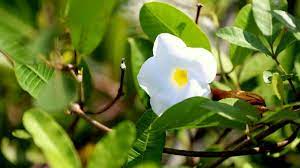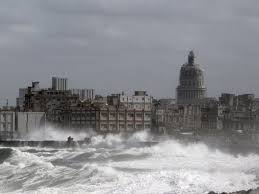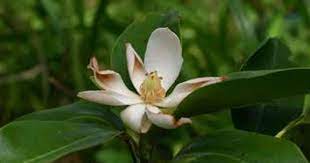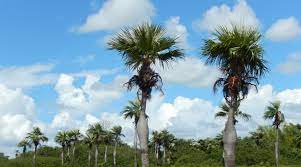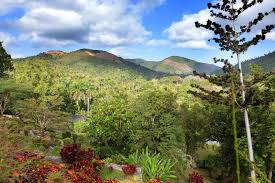LA FLORA CUBANA: SE EXTINGUEN 22 ESPECIES DE NUESTRO PASADO DE EXHUBERANTE BELLEZA NATURAL. PHOTOS
Al cierre de septiembre había otras 772 especies en peligro crítico, 512 en peligro, 396 vulnerables y 518 amenazadas, según una fuente oficial. Más de 300 especies están afectadas por la transformación de sus hábitats en áreas urbanas o turísticas y otras 500 están en riesgo por la interacción con especies exóticas invasoras. (Extractos).
La Lista Roja de la Flora en Cuba confirmó la extinción de otras 22 especies en la isla, de las cuales cuatro desaparecieron de forma definitiva a nivel regional.
La agencia oficialista cubana Prensa Latina cita un listado elaborado por el Instituto de Ecología y Sistemática (IES) del Ministerio de Ciencia, Tecnología y Medio Ambiente de Cuba, donde también se describen las principales amenazas que atentan contra la supervivencia de las especies.
Al cierre de septiembre de 2021, había 772 especies de la flora en peligro crítico, 512 en peligro, 396 vulnerables y 518 amenazadas, según el sitio digital Red Cubana de la Ciencia (Redcien).
Incluirlos en una lista roja permite establecer acciones priorizadas de conservación, recuperación y manejo sostenible de la riqueza vegetal de un país y es considerado un mecanismo mundialmente instituido, señaló la institución.
Si bien el reporte de prensa no detalla cuáles son las especies desaparecidas, asegura que a pesar de la pandemia de Covid-19 pudo evaluarse el estado de conservación de 1,800 especies de la flora, de las cuales a 697 se les hizo un análisis por primera vez.
Se categorizaron 4,800 especies, lo cual representa el 80.5 por ciento de la flora conocida, dijo al respecto la doctora en Ciencias Lisbet González.
“De las especies analizadas, el 46 por ciento presenta algunas de las categorías de amenaza y el 26 por ciento se consideran extintas o extintas regionalmente, una más que lo reportado en 2016 cuando fue confeccionada la anterior Lista Roja”, declaró.
González también afirmó que la actividad agrícola, la tala ilegal y la minería a cielo abierto ponen en riesgo la supervivencia de las plantas cubanas.
Más de 300 especies están afectadas por la transformación de sus hábitats en áreas urbanas o turísticas y otras 500 están en riesgo por la interacción con especies exóticas invasoras.
Cuba es la isla del Caribe con el mayor porcentaje de plantas amenazadas según una evaluación realizada hace cuatro años a 4,627 especies locales.
En 2016 la lista roja también confirmó la extinción de 25 especies de flora, mientras que en 2017 un estudio de la Sociedad Cubana de Botánica había alertado que al menos el 46.31 por ciento de la flora nacional de la isla se encontraba en peligro de extinción.
La “Lista Roja” de la flora vascular cubana en 2016 encontró amenazadas de extinción el 31 por ciento de las angiospermas (plantas que tienen flores y producen frutos con semillas); el 54.5 por ciento de los pteridófitos (helechos) y plantas afines; y el 78.5 por ciento de las gimnospermas (plantas con semillas desnudas, como los pinos), indicó la investigación.
Las provincias con la mayor cantidad de especies amenazadas son Pinar del Río, Holguín, Santiago de Cuba y Guantánamo, pese a que son también las que poseen la mayor cantidad de plantas.
Baracoa, por su parte, constituye el municipio con mayor cantidad de amenazas de extinción.
THE CUBAN FLORA: 22 SPECIES OF OUR PAST EXHUBERANT NATURAL BEAUTY ARE EXTINGUISHED. PHOTOS
At the end of September there were another 772 critically endangered species, 512 endangered, 396 vulnerable and 518 threatened, according to an official source. More than 300 species are affected by the transformation of their habitats in urban or tourist areas and another 500 are at risk due to interaction with invasive alien species. (Excerpts).
The Red List of Flora in Cuba confirmed the extinction of another 22 species on the island, of which four disappeared permanently at the regional level.
The official Cuban agency Prensa Latina cites a list prepared by the Institute of Ecology and Systematics (IES) of the Ministry of Science, Technology, and Environment of Cuba, which also describes the main threats that threaten the survival of the species.
At the end of September 2021, there were 772 species of flora in critical danger, 512 in danger, 396 vulnerable and 518 threatened, according to the website Red Cubana de la Ciencia (Redcien).
Including them in a red list allows establishing prioritized actions for the conservation, recovery, and sustainable management of the plant wealth of a country and is considered a globally instituted mechanism, said the institution.
Although the press report does not detail which are the missing species, it assures that despite the Covid-19 pandemic, the conservation status of 1,800 species of flora could be evaluated, of which 697 were analyzed for the first time. time.
4,800 species were categorized, which represents 80.5 percent of the known flora, said Doctor of Sciences Lisbet González.
“Of the species analyzed, 46 percent present some of the threat categories and 26 percent are considered extinct or extinct regionally, one more than that reported in 2016 when the previous Red List was drawn up,” she declared.
González also affirmed that agricultural activity, illegal logging, and open-pit mining put the survival of Cuban plants at risk.
More than 300 species are affected by the transformation of their habitats in urban or tourist areas and another 500 are at risk due to interaction with invasive alien species.
Cuba is the Caribbean island with the highest percentage of threatened plants according to an assessment carried out four years ago of 4,627 local species.
In 2016 the red list also confirmed the extinction of 25 species of flora, while in 2017 a study by the Cuban Botanical Society had warned that at least 46.31 percent of the island’s national flora was in danger of extinction.
The “Red List” of the Cuban vascular flora in 2016 found 31 percent of angiosperms threatened with extinction (plants that have flowers and produce fruits with seeds); 54.5 percent of pteridophytes (ferns) and related plants; and 78.5 percent of gymnosperms (bare-seeded plants, such as pines), the research indicated.
The provinces with the highest number of threatened species are Pinar del Río, Holguín, Santiago de Cuba, and Guantánamo, although they are also the ones with the highest number of plants.
Baracoa, for its part, is the municipality with the highest number of extinction threats.
Agencies/ CiberCuba/ Internet Photos/ Arnoldo Varona/ www.TheCubanHistory.com
THE CUBAN HISTORY, HOLLYWOOD.



 LA FLORA CUBANA: se Extinguen 22 Especies de Nuestro pasado de Exhuberante Belleza Natural. PHOTOS. * THE CUBAN FLORA: 22 Species of Our Past Exhuberant Natural Beauty are Extinguished. PHOTOS
LA FLORA CUBANA: se Extinguen 22 Especies de Nuestro pasado de Exhuberante Belleza Natural. PHOTOS. * THE CUBAN FLORA: 22 Species of Our Past Exhuberant Natural Beauty are Extinguished. PHOTOS

